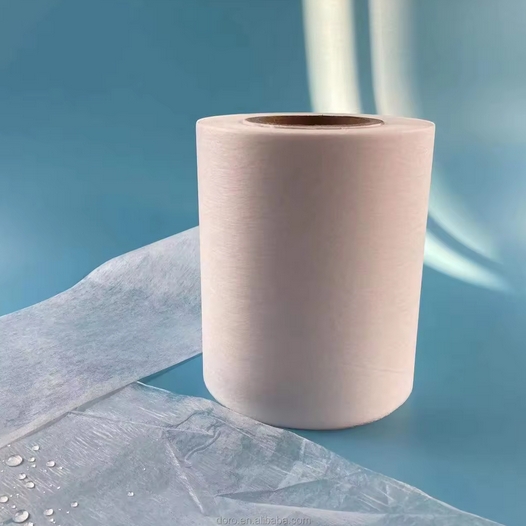Nonwoven fabrics, those ubiquitous materials found in everything from wipes to insulation, are a testament to innovation in textile manufacturing. Unlike woven or knitted fabrics, nonwovens don’t involve yarns or threads. Instead, they utilize a web of fibers bonded together using various methods. Today, we’ll delve into one of the most popular topics: non woven bonding techniques and thermal bonded non woven fabric.

Thermal bonding is a popular method used to create nonwoven fabrics. Here’s a breakdown of the process:
What is thermal bonding?
In thermal bonding, heat is applied to a web of fibers to create bonds between them. This is achieved by utilizing a thermoplastic component within the fibers themselves, or added as a separate film or powder.
types of thermal bonding
Thermal bonding for nonwovens can be achieved through several methods, each with its own advantages and applications. Here are the two main categories of thermal bonding:
1. Through-air bonding:
- In this method, the web of fibers is exposed to heated air, typically within a chamber or by passing it over a heated drum.
- The heated air melts the thermoplastic fibers at their contact points, causing them to fuse together.
- Through-air bonding offers good control over the bonding pattern and can create a variety of effects like embossing or patterned bonding.
2. Calender bonding:
-
This method utilizes heated rollers to apply pressure and heat simultaneously to the web of fibers.
-
The pressure helps to compact the fibers, while the heat activates any thermoplastic components present, causing them to melt and bond the fibers together.
-
Calender bonding is further categorized into three sub-types:
- Area bonding: Creates a continuous bond across the entire web.
- Point bonding: Creates discrete bonded areas at specific points.
- Embossing bonding: Combines bonding with a patterned surface impression on the nonwoven fabric.
Additional factors to consider in thermal bonding:
- Binder materials: Aside from relying solely on the thermoplastic properties of the fibers themselves, thermal bonding can also utilize separate binder materials. These can be applied in various forms like powders, films, or low-melt webs, which then activate with heat and bond the fibers.
- Ultrasonic bonding: Although not strictly a heat-based method, it’s worth mentioning ultrasonic bonding as a related technique. Here, high-frequency sound waves create localized heat through vibration, causing thermoplastic fibers to melt and bond.
Understanding these different types of thermal bonding allows nonwoven manufacturers to choose the most suitable method for their desired nonwoven fabric properties and application.
Thermal bonding process
There are a few ways to achieve thermal bonding:
- Melting fibers: When the web contains thermoplastic fibers, applying heat causes them to melt or become viscous. In this state, the fibers fuse together at the contact points, forming bonds when they cool down.
- Activating bonding agents: Sometimes, a separate thermoplastic material like a powder or film is introduced between fiber layers. Applying heat melts this material, which then bonds the fibers together.
Applications of thermal bonded nonwovens:
Thermal bonded nonwovens have a wide range of applications due to their versatility. Here are some examples:
- Disposable wipes and hygiene products
- Medical supplies like bandages and drapes
- Filtration materials for air and liquids
- Interlining fabrics for clothing
- Insulation materials
Advantages of Thermal Bonding
Thermal bonding offers several advantages that make it a popular choice in nonwoven manufacturing:
- Speed Demon: The process is known for its high production speeds, making it ideal for large-scale production.
- Eco-Friendly Edge: Compared to chemical bonding methods, thermal bonding uses minimal to no chemicals, minimizing environmental impact.
- A Tailor’s Touch: The process can be adjusted to create nonwovens with a variety of properties. By controlling factors like heat application and pattern, manufacturers can achieve different levels of strength, breathability, and softness in the final product.
I hope this explanation helps! If you’d like to know more about specific aspects of thermal bonding in nonwovens, feel free to ask.
